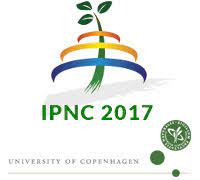Ver ítem
- xmlui.general.dspace_homeCentros Regionales y EEAsCentro Regional Patagonia SurEEA Santa CruzPresentaciones a congresosxmlui.ArtifactBrowser.ItemViewer.trail
- Inicio
- Centros Regionales y EEAs
- Centro Regional Patagonia Sur
- EEA Santa Cruz
- Presentaciones a congresos
- Ver ítem
15N uptake and distribution in grasses growing under Nothofagus antarctica vs. grasses in an open site
Resumen
In Argentinean Patagonia, there is an extensive area from 36º 30´ to 56º 00´SL where Nothofagus antarctica (ñire) native forests are distributed in a narrow strip being the main use as silvopastoral system. In these systems, understory vegetation (composed mainly by grasses) is grazed mainly for cattle and sheep (Peri & Ormaechea 2013). Next to the N. antarctica forest, in the ecotone zone, there are grasslands also used for extensive sheep or cattle
[ver mas...]
In Argentinean Patagonia, there is an extensive area from 36º 30´ to 56º 00´SL where Nothofagus antarctica (ñire) native forests are distributed in a narrow strip being the main use as silvopastoral system. In these systems, understory vegetation (composed mainly by grasses) is grazed mainly for cattle and sheep (Peri & Ormaechea 2013). Next to the N. antarctica forest, in the ecotone zone, there are grasslands also used for extensive sheep or cattle production with many grass species in common with understory forest species. Likewise, as nitrogen is usually a limiting nutrient in most of the ecosystems, we aimed to know how grasses utilize and distribute available N when they are growing in open areas or close to trees. It is known that trees may compete for resources, but they
may also increase soil fertility, microbialactivity orimprove water availabilityby reducing water loss from evapotranspiration inshade (i.e.Mordeletand Le Roux 2006; Simmons et al. 2008). The aim of this work was to study 15N uptake and distribution in grasses growing in undertory N. antarctica trees compared with grasses growing in an open grassland. We hipotethized that in these austral
ecosystems, when water may be limiting owing to strong summer winds, grasses under trees could better absorb and assimilate the available N than grasses growing in open landscapes.
[Cerrar]

Fuente
Proceedings XVIII International Plant Nutrition Colloquium - IPNC 2017, University of Copenhagen, Copenhagen, Denmark, 21-24 August 2017. p. 2-4.
Fecha
2017-08-21
Editorial
University of Copenhagen
ISBN
978-87-996274-0-0
Formato
pdf
Tipo de documento
documento de conferencia
Palabras Claves
Derechos de acceso
Abierto
 Excepto donde se diga explicitamente, este item se publica bajo la siguiente descripción: Creative Commons Attribution-NonCommercial-ShareAlike 2.5 Unported (CC BY-NC-SA 2.5)
Excepto donde se diga explicitamente, este item se publica bajo la siguiente descripción: Creative Commons Attribution-NonCommercial-ShareAlike 2.5 Unported (CC BY-NC-SA 2.5)


